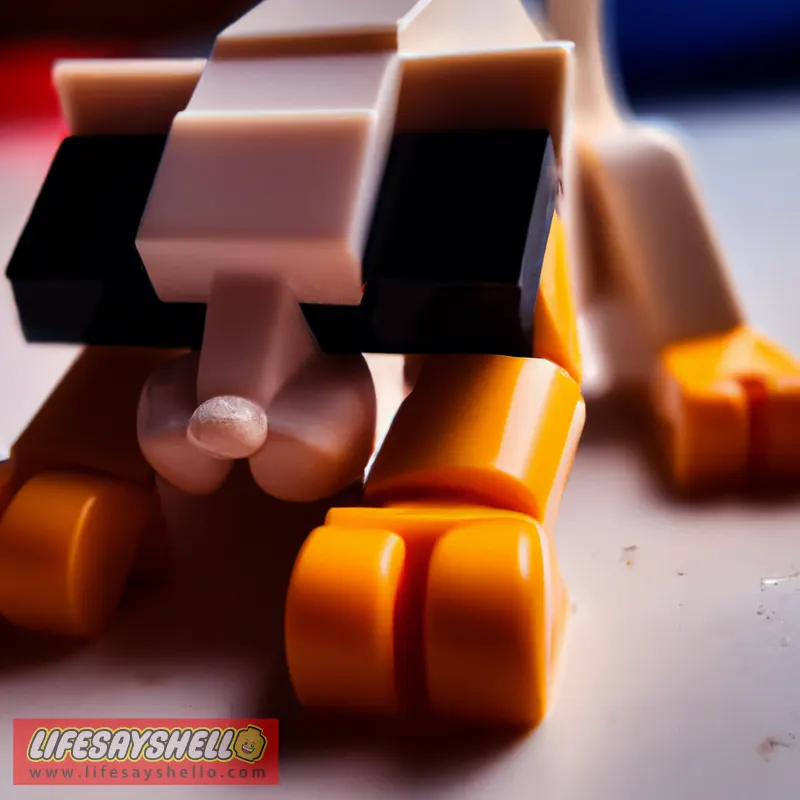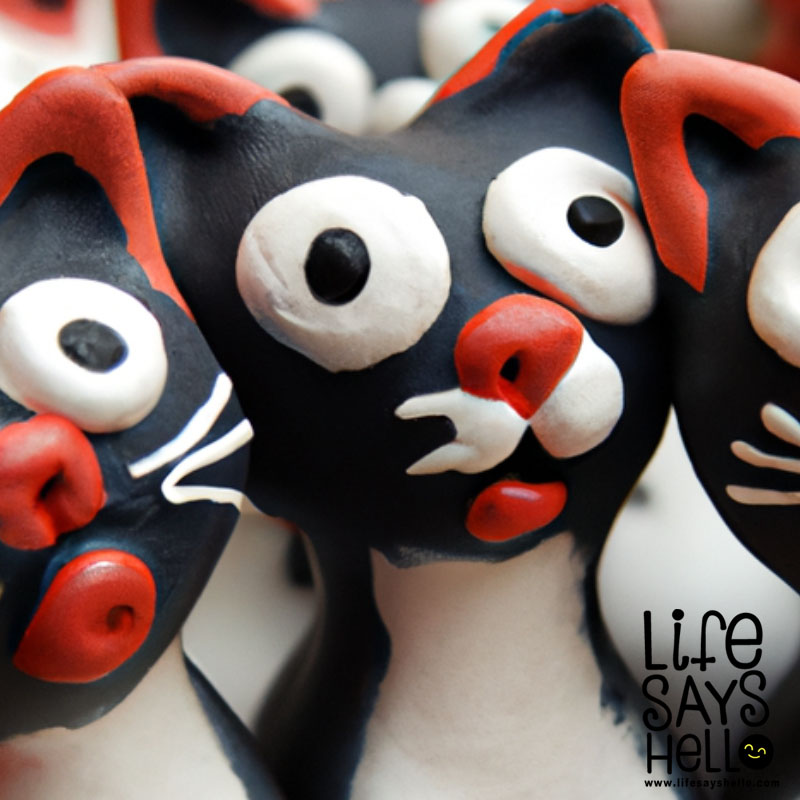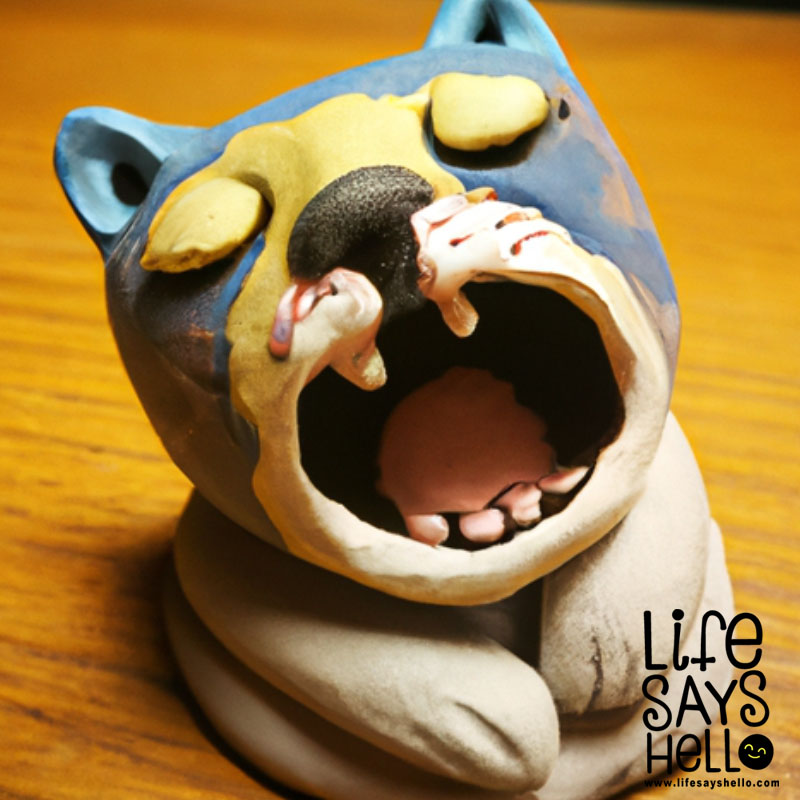The Comforting Ritual: Why Do Cats Knead?

Have you ever watched your cat rhythmically push its paws in and out while sitting on your lap or a favorite blanket? This distinctive motion of alternating paws, often called "making biscuits," is an instinctive feline behavior known as kneading. For cat owners, it often elicits the question - why do cats knead?
Kneading in cats has its origins in early development but continues into adulthood as a means of communicating contentment, marking territory, creating comfortable spots, and even signaling mating readiness. By understanding the meaning behind this unique ritual, cat owners can better interpret their pet's body language cues. Whether they are signaling pleasure or anxiety through kneading, recognizing your cat's needs is key to strengthening your bond.
The Soothing Rhythms of Feline Kneading
A cat kneading is a familiar sight to owners - the alternating in-and-out motions of their front paws on a cushioned surface. It often appears as if they are digging into or punching at the surface below them. Cats may gently purr during kneading or have a calm but intent facial expression.
This rhythmic paw motion begins in early life. Kittens instinctively knead and push against their mother's belly when nursing to stimulate milk flow. The motion helps the milk to "let down" from the mother cat's mammary glands so kittens can feed. Beyond nursing, kittens also knead their mother to bond, relax, and communicate. These early experiences lead kneading to become a comforting, instinctive movement for adult cats as well.
As cats grow older, kneading continues to be associated with relaxation and conveying contentment. Many cats happily knead away on their owner's lap when being petted and cuddled. They also knead on favorite blankets or pillows when preparing to settle in comfortably for a nap. Your cat may also knead you with its paws as a way to connect with you and show its affection. For cats, kneading is a soothing and pleasurable ritual.
Kneading as Communication
In addition to demonstrating comfort, a cat's kneading can also serve as communication. Cats have scent glands located in between their paw pads, so when they knead against a surface they are also spreading their own distinctive scent. By marking territory with these pheromones found in their paw pads, kneading allows cats to communicate ownership and familiarity with you or a location.
Female cats may increase kneading behaviors when going into heat as signaling readiness to mate. Unneutered male cats may also knead more frequently when detecting a female in heat nearby. Keep an eye out for excessive kneading paired with behaviors like louder meowing, restlessness, and attempts to escape outdoors as possible signs your cat is in heat.
Understanding that kneading can signal mating urges along with contentment provides greater insight into what your cat is trying to convey through shifts in this instinctive behavior.
Preparing the Purrfect Spot
In addition to communicating with their humans or marking territory, another reason for kneading is to simply prepare a comfortable resting area. By alternately pressing in their front paws, cats work to fluff and soften a blanket, cushion, or piece of clothing. Your cat may pick a few favorite soft spots for kneading and nesting rituals.
Much like how humans fluff pillows and pull up blankets to create cozy spaces for sleeping, cats knead to fashion their own soothing nests. Watching your cat vigorously knead before curling up in a spot shows they are making the location suitably snuggly for cat naps. This is another reason kneading is often ramped up when your cat is relaxed and ready to snooze.
Reading Your Cat's Body Language
Since kneading has multiple meanings, it is important to look at broader body language cues to understand the context behind this distinctive behavior. Here are some signals that can show your cat's kneading is coming from a place of contentment:
- A relaxed body posture, such as sitting or reclining comfortably
- Kneading while purring
- Ears in a neutral, natural position
- Eyes partially closed or blinking slowly
- Tail held upright with the tip curled
- Gentle pawing motion, not overly intense
You can confirm your cat is happy and kneading to show its delight by looking for accompanying signals like inviting you to pet it, approaching you to cuddle in your lap, or curling up into a sleeping position after kneading.
On the other hand, here are some potential signs of anxiety or stress influencing your cat's kneading:
- Body appears contracted or crouched down
- Muscles look tense or rigid
- Tail tucked tightly against the body
- Ears flattened back or rotated to the sides
- Dilated pupils
- Rapid, intense pawing motions
- Excessive drooling or lip licking
Context clues like hiding, overly flattened posture, aggressive behavior, and refusing petting can also indicate kneading driven by stress rather than contentment.
Soothe the Anxious Kneader
Sometimes cats knead due to feeling anxious, such as environmental changes like introducing a new pet or family member bringing stress. It's important not to punish or discipline a cat for kneading, as this is an innate behavior hardwired into their instincts.
If your cat's kneading seems to come from stress, there are ways to help soothe your pet:
- Allow them an escape to a safe hiding spot when overwhelmed
- Give them space and avoid forcing interaction when anxious
- Introduce changes gradually to allow adjustment time
- Consider calming aids like pheromone diffusers
- Provide plenty of enrichment toys and vertical spaces
- Keep their routine consistent with familiar feeding, play, and sleep rituals
Additionally, pay attention to other signals of anxiety like aggressive behaviors, decreased appetite, or elimination issues that could indicate underlying health or environmental issues. As always, discuss any concerns with your veterinarian as well.
Bonding Through Understanding
While the origins of feline kneading behaviors are instinctive, appreciating the nuances in meaning behind this ritualistic motion allows for closer bonds between pet owners and their cats. Whether it appears your cat is making biscuits out of happiness on your lap, contentedly preparing for a nap, or anxiously responding to stressors, approach them with patience and care.
Watching your cat's unique mannerisms, from the rhythmic kneading of paws to subtle ear twitches, makes their complex communication come to life. Understanding your cat's needs, including times when they desire kneading for comfort versus moments of distress, ultimately allows you to provide the best care for your furry companion.




Comments